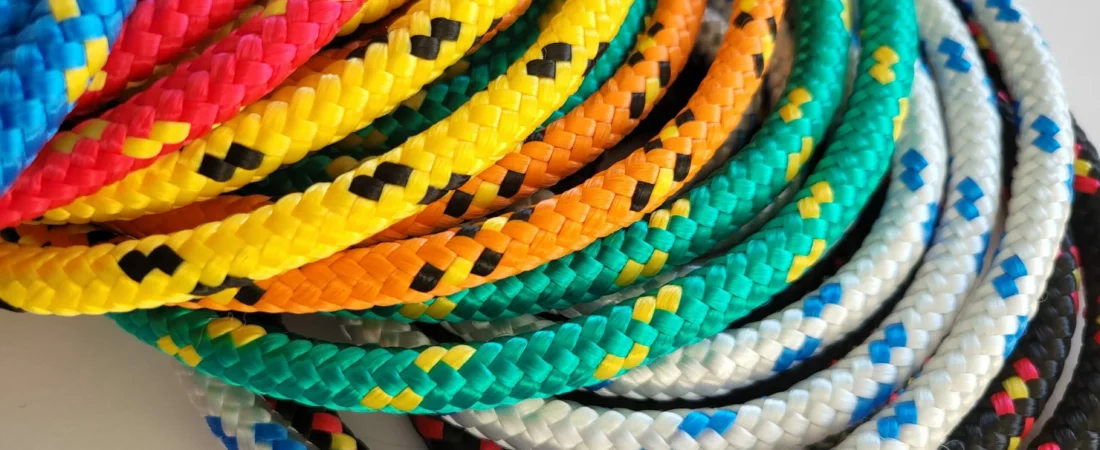Introduction
Ropes have come a long way from simple twisted fibers to high-tech lifelines engineered for extreme performance. Modern innovations in materials and design have transformed ropes into lightweight, ultra-strong, and multifunctional tools. These ropes are crucial in military operations, tactical rescues, space exploration, and high-performance sports. This article explores cutting-edge rope technologies, their properties, and the specialized applications that push human capability to its limits.
The Evolution of High-Tech Ropes
From Natural Fibers to Ultra-Modern Materials
Historically, ropes were made from hemp, cotton, or jute—strong for their time but limited in durability and load capacity. The invention of synthetic fibers like nylon, polyester, and polypropylene brought flexibility, elasticity, and resistance to moisture and UV rays. Modern ultra-high-molecular-weight polyethylene (UHMWPE), such as Dyneema, and aramid fibers like Kevlar, have revolutionized rope engineering. These materials provide extreme tensile strength, low stretch, and exceptional durability in harsh environments.
Key Innovations
- Dyneema and Spectra Fibers
- Extremely high strength-to-weight ratio.
- Floating ropes suitable for water and marine operations.
- Resistant to chemicals and abrasion.
- Common in military, mountaineering, and rescue applications.
- Kevlar and Aramid Ropes
- Heat-resistant and cut-resistant.
- Used in firefighting, industrial safety, and tactical rope systems.
- Resistant to sharp edges and extreme environmental stress.
- Multi-Core Ropes
- Combine materials for maximum strength, flexibility, and durability.
- Outer sheath for abrasion resistance, core for load-bearing.
- Used in rescue, climbing, and specialized military applications.
- Smart Ropes
- Embedded sensors track tension, load, and wear.
- Provide real-time feedback for rescue teams and climbers.
- Early adoption in space missions and high-risk industrial operations.
Military Applications
Tactical Operations
- Fast-Rope Insertion: Ropes used for rapid deployment from helicopters in urban or jungle environments.
- Rappelling and Climbing: High-strength static ropes allow soldiers to descend safely.
- Load Hauling: Ultra-strong ropes lift heavy equipment or secure cargo in challenging terrains.
Special Forces
- Stealth Missions: Lightweight, quiet ropes for night operations.
- Breaching and Rescue: Cut-resistant ropes ensure reliability during hazardous missions.
- Multipurpose Utility: Ropes used to set up shelters, rappel, or rig lines for communication systems.
Rescue Applications
Urban and Disaster Response
High-tech ropes save lives in extreme conditions:
- Building Collapses: Lightweight yet strong ropes facilitate extraction of trapped victims.
- High-Rise Evacuations: Ropes allow rapid deployment and descent from tall structures.
- Water Rescue: Floating ropes with extreme strength resist currents and provide secure lifelines.
Wilderness and Mountain Rescue
- Dyneema ropes minimize weight carried by rescuers while providing superior load capacity.
- Aramid ropes resist cutting and abrasion in rocky, icy, or harsh environments.
- High-tech ropes integrate with pulley systems, harnesses, and mechanical advantage setups for efficiency.
Innovations in Extreme Sports
Climbing and Mountaineering
- Modern ropes provide dynamic performance for high-altitude climbing.
- Lightweight, low-diameter ropes reduce fatigue and improve mobility.
- Integrated abrasion-resistant sheaths protect against sharp rocks and ice.
Adventure Racing and Canyoning
- Multi-functional ropes handle climbing, rappelling, and emergency rigging.
- Water-resistant fibers allow rope use in wet and flooded conditions.
- High-strength synthetic cores prevent breakage under heavy loads.
Materials and Properties
| Material | Strength-to-Weight | Stretch | Durability | Special Features | Best Use |
|---|---|---|---|---|---|
| Dyneema (UHMWPE) | Very High | Low | Very High | Floats, abrasion & chemical resistant | Military, water rescue, climbing |
| Kevlar / Aramid | High | Low | Very High | Cut & heat resistant | Firefighting, tactical |
| Nylon | High | High | Medium | Shock absorption | Climbing, rescue |
| Polyester | High | Low | High | UV & water resistant | Sailing, industrial |
| Multi-Core Hybrid | Very High | Adjustable | Very High | Combines properties of fibers | Military, extreme sports |
Practical Tips for High-Tech Rope Use
- Inspection: Always check ropes for fraying, cuts, or sheath damage.
- Proper Storage: Keep ropes dry, cool, and away from UV exposure.
- Avoid Overloading: Know the rated capacity and never exceed it.
- Integration with Hardware: Use carabiners, pulleys, and anchors rated for high loads.
- Training: Personnel should practice in controlled conditions before real-world use.
Rope Safety in Extreme Conditions
- Redundancy: Always use backup ropes or redundant systems in critical operations.
- Anchoring: Secure anchors with multiple points to prevent failure.
- Environmental Awareness: Ropes may behave differently in extreme heat, cold, or wet conditions.
- Maintenance: Regular cleaning and inspection prolong the life and performance of high-tech ropes.
Future of Ropes
Smart and Sensor-Integrated Ropes
- Embedded sensors for load monitoring, wear detection, and environmental data.
- Connects to apps or control panels for real-time monitoring.
Ultra-Lightweight Materials
- Research into nanofibers and graphene composites promises ropes stronger than steel at a fraction of the weight.
Space Exploration
- Lightweight, high-strength ropes essential for extravehicular activities and spacecraft rigging.
Conclusion
High-tech ropes are at the forefront of modern safety, military, and adventure applications. Their evolution from simple hemp fibers to multi-material, sensor-equipped lifelines represents human ingenuity and the drive to push limits. Whether in tactical operations, extreme sports, or high-risk rescue missions, high-tech ropes provide unparalleled strength, versatility, and reliability. Understanding their properties, proper use, and maintenance is essential for anyone relying on ropes in extreme situations.
The future promises even more advanced materials and smart technologies, ensuring ropes remain critical tools in human exploration, safety, and innovation.
